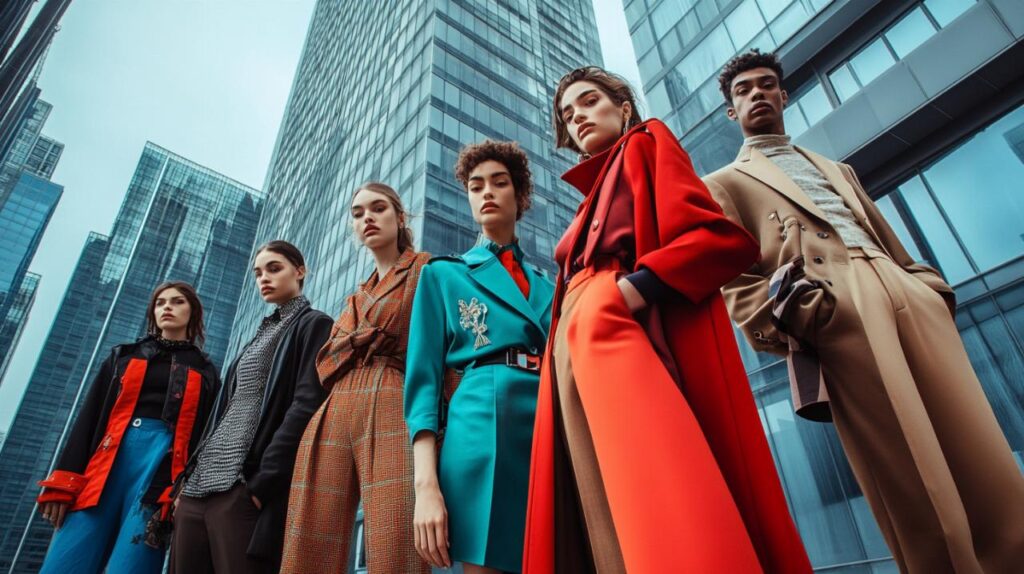Fashion and philosophy might seem like worlds apart at first glance, yet they share a remarkable connection that shapes how we understand ourselves and the society around us. What we choose to wear is never merely about fabric or following trends; it is a powerful expression of our beliefs, values, and the very essence of who we are. From the runways of London to the streets of Paris, clothing serves as a visual language that communicates ideas without uttering a single word. This dialogue between garment and thought invites us to ponder the deeper meanings behind our sartorial choices and how they reflect our place in the world.
The philosophy of self-expression through clothing
The act of dressing ourselves each morning is far more profound than simply preparing for the day ahead. It is an opportunity to express our personal identity and to present ourselves to the world in a way that feels authentic. Fashion becomes a canvas upon which we paint our beliefs, aspirations, and even our uncertainties. Every choice, from the colour of a jumper to the cut of a pair of trousers, tells a story about who we are and what we stand for. This narrative is not static; it evolves as we grow, learn, and encounter new experiences. The garments we select are declarations of our inner selves, revealing layers of meaning that extend far beyond their physical form.
Identity and Authenticity in What We Wear
Our clothing acts as a mirror reflecting our innermost thoughts and values. When we dress in a manner that aligns with our true selves, we experience a sense of authenticity that resonates both internally and externally. This connection between identity and attire is not merely superficial; it is deeply rooted in our understanding of who we are and how we wish to be perceived. Fashion allows us to explore different facets of our personality, offering a space for experimentation and self-discovery. Whether we choose bold patterns or understated elegance, each decision reinforces our sense of individuality. The interplay between identity expression and self-expression is crucial, as it enables us to navigate the complexities of modern life whilst remaining true to ourselves. As we consider the work of fashion Luz Marina and other thinkers in this space, it becomes clear that the dialogue between philosophy and style is essential for understanding the human experience.
Fashion as a Visual Language of the Self
Clothing serves as a visual language, a form of communication that transcends words and speaks directly to the observer. This language is rich with symbolism and meaning, conveying messages about our cultural values, social affiliations, and personal beliefs. The way we dress can signal our alignment with certain ideologies or our desire to challenge the status quo. Fashion discourse has long recognised that garments are not passive objects but active participants in shaping our identities and how we engage with the world. The semiotics of clothing reveal that every stitch, every texture, and every hue carries significance. By understanding this visual language, we gain insight into the broader narratives that define our society and the role we play within it. This awareness transforms the act of dressing into a deliberate and thoughtful practice, one that honours both our individuality and our connection to the collective.
Questioning beauty standards and aesthetic values
 Beauty has always been a subject of philosophical inquiry, and fashion serves as a powerful arena for exploring and challenging prevailing standards. Designers often push boundaries, experimenting with forms and styles that defy conventional notions of attractiveness. This willingness to break the rules invites us to reconsider what we find beautiful and why. Aesthetic theory provides a framework for understanding these shifts, offering insights into the cultural and historical forces that shape our tastes. Fashion consciousness encourages us to question the assumptions underlying our preferences and to recognise the diversity of beauty that exists across different cultures and eras. By engaging with these questions, we become more aware of the ways in which beauty standards are constructed and the impact they have on our lives.
Beauty has always been a subject of philosophical inquiry, and fashion serves as a powerful arena for exploring and challenging prevailing standards. Designers often push boundaries, experimenting with forms and styles that defy conventional notions of attractiveness. This willingness to break the rules invites us to reconsider what we find beautiful and why. Aesthetic theory provides a framework for understanding these shifts, offering insights into the cultural and historical forces that shape our tastes. Fashion consciousness encourages us to question the assumptions underlying our preferences and to recognise the diversity of beauty that exists across different cultures and eras. By engaging with these questions, we become more aware of the ways in which beauty standards are constructed and the impact they have on our lives.
The Ever-Changing Definition of Beauty in Fashion
The definition of beauty in fashion is anything but static; it evolves continuously, reflecting the dynamic nature of human society. What was considered chic a decade ago may now appear dated, whilst styles once dismissed as unconventional can suddenly become the height of modernity. This constant flux reminds us that nothing stays the same forever and that our perceptions of beauty are shaped by a multitude of factors, including social commentary, political statement, and cultural values. The fashion industry, with its rapid cycles and ever-shifting trends, serves as a microcosm of this broader phenomenon. As we observe these changes, we are prompted to reflect on our own relationship with beauty and to consider how our tastes are influenced by the world around us. This awareness can lead to a more inclusive and open-minded approach to fashion, one that celebrates diversity and rejects narrow definitions of attractiveness.
Philosophical Perspectives on Taste and Style
Philosophers have long grappled with questions of taste and style, seeking to understand why we are drawn to certain aesthetics and not others. These inquiries reveal that our preferences are not purely subjective; they are informed by cultural norms, historical context, and even ethical considerations. The rise of ethical fashion and sustainable clothing has introduced a new dimension to this debate, as more people seek to align their sartorial choices with their values. Moving away from fast fashion, which often harms both workers and the planet, towards more conscientious practices reflects a growing awareness of the broader implications of what we wear. Designers as philosophers use their craft to explore these themes, creating garments that challenge us to think critically about beauty, identity, and responsibility. By engaging with these philosophical perspectives, we deepen our understanding of the complex relationship between fashion and the human experience, recognising that style is not merely about appearance but about the values and ideas we choose to embody.


